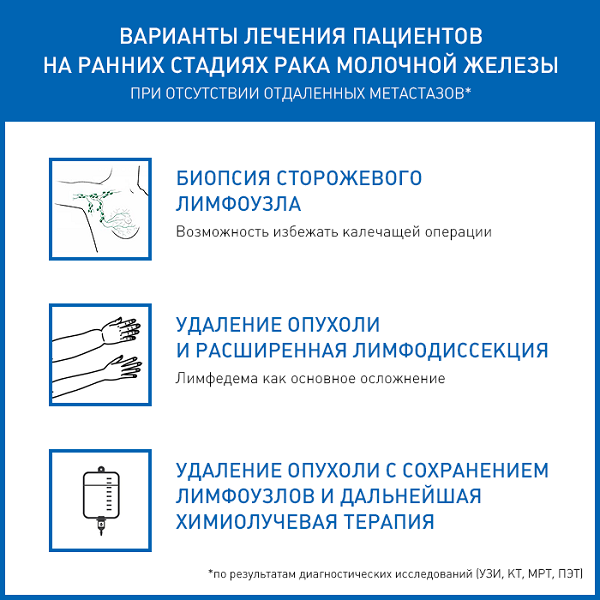In the vast majority of cases, lymph from the mammary glands flows into the axillary (axillary) lymph nodes.
In order to find the sentinel lymph node in

After the introduction of the radiopharmaceutical, it is necessary to determine where the sentinel lymph node is located. This is done using a gamma camera (SPECT/CT). Thanks to this, the surgeon can determine in advance what access he needs in order to find this lymph node minimally traumatic for the patient.
During surgery, the sentinel lymph node is localized using a gamma probe through a small incision in the skin, to which the lymph node is connected. The isotope-labeled lymph node is removed and transferred for intraoperative histological examination. If no metastases are found in the lymph node, the wound is sutured, and the removed lymph nodes are sent to the laboratory for an extended histological examination. If the lymph nodes are intact, then the patient with minimal postoperative changes (with small scars) goes home to recover. If micrometastases are found in the lymph nodes, a decision is made on how to treat the patient further. This can be chemotherapy, radiation therapy, extended surgery.
Multicenter studies are currently underway that show that even if there are micrometastases in one or two sentinel lymph nodes in breast cancer that do not grow into the capsule of the lymph node itself, it is not necessary to perform an extended lymph dissection. In this case, radiation therapy is performed on the armpit area. The data show that the life expectancy after surgery in such patients is comparable to that of patients who underwent lymph dissection, but the quality of life remains at a higher level.

What happens if sentinel lymph nodes are not biopsied in breast cancer?
At the earliest stages of the disease, when all diagnostic methods have shown the absence of distant metastases, there are two options for surgical treatment of patients without sentinel lymph node biopsy.:
1. Tumor removal and extended lymph dissection (removal of all or almost all lymph nodes).
As a result of extended lymph dissection, many complications develop, such as edema, impaired motor function of the arm, and, as a result, disability of the patient.
Lymphedema is the most serious of all side effects after lymph node removal surgery, and it can be irreversible. Lymphedema is manifested by swelling of the fingers, palms and hands, or even the entire arm, formed due to the accumulation of lymph.
2. Removal of the tumor itself with preservation of the lymph nodes and further irradiation of the axillary area, that is, chemotherapy and/or radiation therapy.
Was this information helpful?
Questions and answers
Ask a Question









.webp)
















